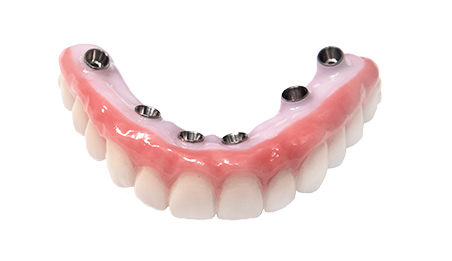The Definitive Guide to Dental Sense
The Definitive Guide to Dental Sense
Blog Article
Dental Sense Things To Know Before You Get This
Table of ContentsThe Best Strategy To Use For Dental SenseThe Definitive Guide to Dental SenseNot known Factual Statements About Dental Sense Rumored Buzz on Dental Sense
are medical devices operatively implanted right into the jaw to bring back an individual's ability to chew or their appearance. They supply support for fabricated (phony) teeth, such as crowns, bridges, or dentures. When a tooth is lost as a result of injury or condition, a person can experience complications such as quick bone loss, defective speech, or changes to eating patterns that lead to pain.Dental dental implant systems include an oral implant body and oral implant joint and may likewise include an abutment addiction screw. Dental implants. The oral implant body is surgically inserted in the jawbone in place of the tooth's origin. The oral implant joint is typically affixed to the dental implant body by the joint addiction screw and extends with gums right into the mouth to sustain the attached artificial teeth
(https://issuu.com/dentalsense1)Framework of The Dental Implant System selecting dental implants, talk with your dental copyright regarding the potential benefits and threats, and whether you are a candidate for the treatment. Things to consider: Your total health and wellness is an important consider establishing whether you are a good candidate for dental implants, the length of time it will certainly take to heal, and how much time the implant might remain in area.
Cigarette smoking may affect the recovery process and lower the long-lasting success of the dental implant. The recovery process for the dental implant body may take a number of months or longer, during which time you typically have a short-term abutment instead of the tooth. the oral implant treatment: Thoroughly adhere to the oral health guidelines offered to you by your dental copyright.
Some Known Incorrect Statements About Dental Sense
Implant failure can lead to the demand for one more surgery to take care of or change the implant system. Brings back the capability to chew Restores aesthetic look Helps maintain the jawbone from shrinking because of bone loss Maintains the health and wellness of the surrounding bone and periodontals Aids maintain surrounding (close-by) teeth stable Enhances lifestyle Damage to bordering natural teeth throughout dental implant positioning Injury to the surrounding tissues during surgery, such as sinus opening Injury during surgical procedure (for instance, fracture of bordering jawbone) Poor feature, such as seeming like the teeth do not bite with each other generally An experience that the tooth hangs or turning in position arising from a joint screw loosening Implant body failing (looseness of the dental implant body) because of systemic infection, which may be more most likely in patients with uncontrolled diabetics issues due to neighborhood infection in bone and gum tissues supporting the dental implant body as a result of postponed healing, which might be most likely in individuals that smoke Trouble cleansing the periodontals around the implant, resulting in bad dental hygiene Without treatment gum illness Post-surgical feeling numb as a result of nerve impingement or damages Always inform healthcare companies and imaging service technicians that you have dental implants before any magnetic vibration imaging (MRI) or x-ray procedures.
FDA is not knowledgeable about any type of adverse occasions reported for MRI or x-ray treatments with dental implants. Dental implants systems are normally made from products that follow global consensus criteria of the International Company for Standardization (ISO) or ASTM International. These criteria have information of what makes a secure material.

A dental implant is a framework that changes a missing out on tooth. With screw-like devices, the specialist inserts an implant right into the jawbone, and it acts as an anchor for a man-made tooth, called a crown.
Facts About Dental Sense Uncovered
Some people are not qualified for oral implant surgical treatment. It is for dental doctors to operate on individuals with: acute illnessuncontrollable metabolic diseasebone or soft tissue illness or infectionIf these problems are resolved, a person can have the surgical treatment. In, dental surgeons avoid operating on individuals with: If individuals with any of the above undergo oral implant surgery, there is a higher threat of the implant stopping working.

Oral dental implant surgery is a tailored process. It's not the exact same for everybody. The adhering to gives a general overview of what you can anticipate your dental expert, oral cosmetic surgeon, periodontist or prosthodontist to do: Put the implant operatively. Provide you time to heal. Connect the blog post and last crown, bridge or denture.
Next off, your doctor will thoroughly put the dental implant into your jaw. Your specialist will certainly rearrange your see this site gums and shut the cut with stitches. If your implant is near the front of your mouth, your dental practitioner will certainly make a short-lived tooth for you to use until you heal. In this way, you won't have a void in your smile while you recoup.
Some Ideas on Dental Sense You Need To Know
Your provider can tell you what to anticipate in your circumstance. Throughout the healing stage, your jawbone ought to fuse to the dental implant. This procedure, called osseointegration, is vital for stability and long-lasting success. This procedure can take anywhere from three to 9 months. Sometimes, it may take much longer.
As soon as your implant heals, your dentist can attach the joint (tiny connector post) and your final repair (crown, bridge or denture). This usually takes concerning one hour to finish and might require a second small surgical procedure. You shouldn't feel any pain throughout your oral implant treatment due to the fact that your provider will use drug to numb your gums.
Report this page